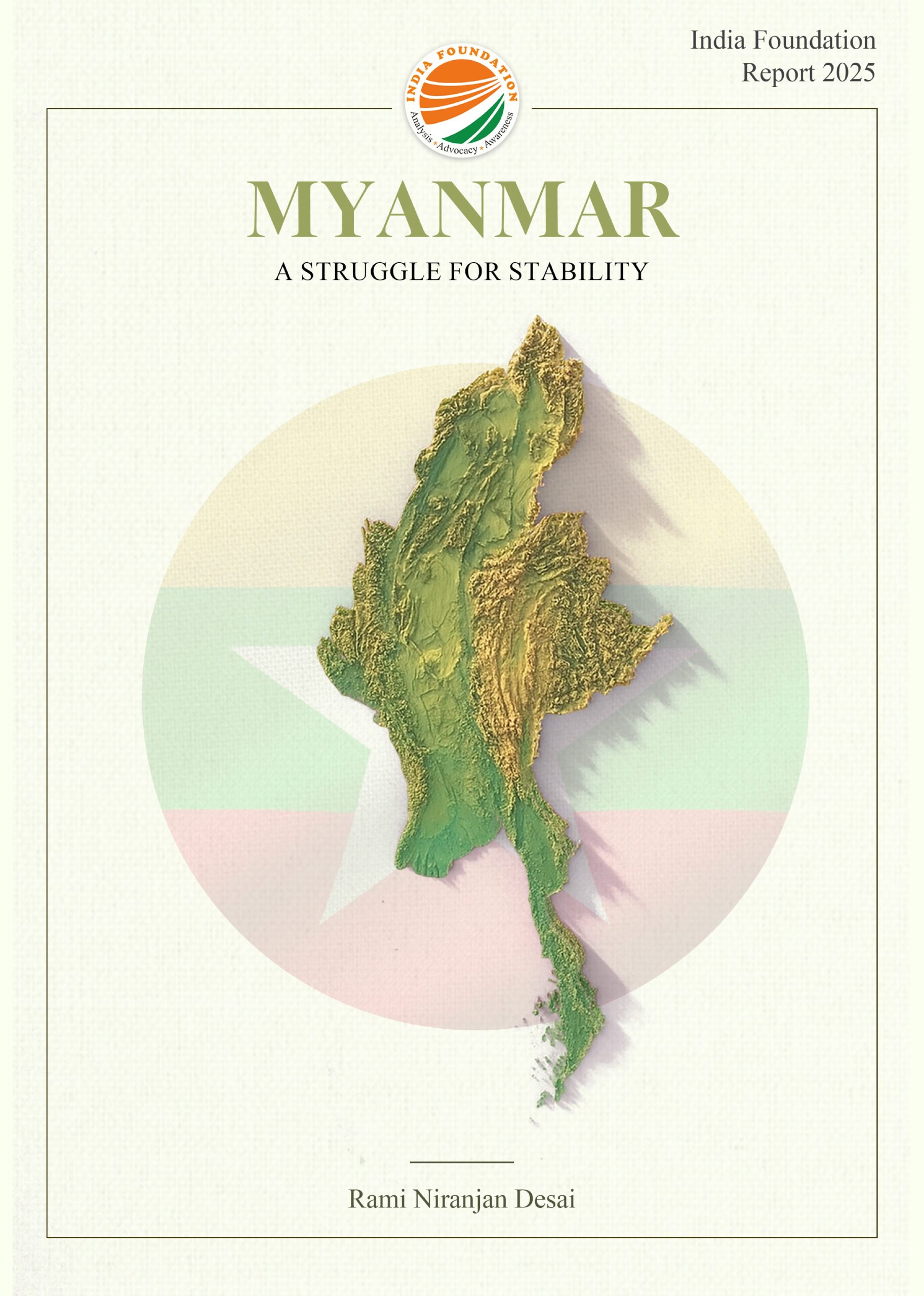Introduction
The macro-economics of the Union Budget 2023/24 is simple, but not simple minded. A classical budget, it seeks to pump-prime the economy through autonomous investment and engender dependent consumption demand thereby increasing incomes, both aggregate and disposable.
Be it the underwriting of food consumption of the poor with a Rs 2 lakh crore allocation for free grain for the poorest, or to increasing public capital expenditure for “crowding in” capital formation by the private sector or the increasing disposable incomes of the high consuming segment of middle class through direct tax relief.
Key Takeaways
This budget makes a break from past in two ways; first, from the time-honoured tradition of being populist ahead of elections. Nirmala Sitharaman has been practical, not populist. Second, a move away from current expenditures and transfer payments, a hallmark of the earlier NDA budgets. The focus of this year’s Union Budget is on capital expenditure. The Capex allocation is, unlike in the recent past, likely to “crowd in” capital formation by the private sector because the gross market borrowing program in relation to the nominal growth of the economy is lower. This will ensure that the much-needed private corporate investment is not crowded out from the financing side. Till now, because of the massive pre-emption of financial resources for financing investments, an increase in public investment has resulted in a decrease in private investment, especially private corporate investment.
While the public expenditure policy is decidedly expansionary, the fiscal policy can’t be called that. It is, at best, accommodative in its stance and substance. While the size of the gross fiscal deficit is budgeted at fifty basis points lower than the previous year, the cyclically adjusted fiscal deficit is almost 100 basis points lower at 5.5 per cent. This reduction in the overall fiscal deficit comes along with an increase in capital expenditure. Not only is this the key highlight of the budget but it also underlies the real gains in fiscal management over the years.
Given the overall increase of 7.5 per cent in total expenditure, the substantial increase in the capital expenditure that has been budgeted implies a significant change in the structure of expenditure away from revenue expenditure which is budgeted to grow by 1.3 per cent. Notwithstanding the sharp reduction of one third in food subsidy and by a quarter of the fertiliser subsidy bill, revenue expenditure is still 11.6 per cent of GDP; more than three times of capital expenditure which is budgeted to rise to 3.3 per cent of GDP. This points towards the emergence of serious macro-economic anomaly of interest payments overtaking capital expenditures. In other words, the amount of money that the Union will spend to defray past borrowings will be more than that earmarked for creating new capacities. Obviously, this anomaly is a consequence of the national debt having gone up nearly four times from Rs 32.3 lakh crore to Rs 115 lakh crore in FY22. The increasing debt burden has resulted in interest payment shooting up from 2.2% of GDP to 3.1%.
But for now, key takeaway from the underlying fiscal policy is that the revenue deficit, which used to account for more than two thirds of the fiscal deficit and pre-empted as well as raised the cost of finance for productive private investment is beginning to show a decline. It is still not quite at the level of being one-third that it was earlier. This change in fiscal consolidation can free up productive resources for the private sector and contribute to lowering the cost of capital, thereby raising the growth rate of the economy in 2023-24.
An interesting and important initiative in the Union Budget has been to try and delink the Capex in the states from their fiscal deficit. Even as the Centre has fixed States’ gross fiscal deficit at 3.5 per cent of the gross state domestic product for 2023-24, it has decided to continue with the 50-year interest-free loan to States for one more year with an enhanced allocation of 1.3 lakh crore. The loan amount will have to be spent in 2023-24. While most of the loan will be at the discretion of the States, a part of it will be contingent on States increasing their actual capital expenditure.
A part of the outlay will also be linked to, or allocated for, scrapping old government vehicles, urban planning reforms and actions, financing reforms in urban local bodies (to make them creditworthy for municipal bonds), housing for police personnel above or as part of police stations, constructing Unity Malls, children and adolescents’ libraries and digital infrastructure, and States’ share of capital expenditure of central schemes. The Union Budget also proposes to incentivise cities to improve their creditworthiness for municipal bonds through property tax governance reforms and ring-fencing user charges on urban infrastructure. Additionally, an Urban Infrastructure Development Fund (UIDF) is proposed to be established. It will be managed by the National Housing Bank and used by public agencies to create urban infrastructure in Tier 2 and Tier 3 cities.
Despite this, the transfer to states is becoming an area of concern. While the gross transfer to the States is budgeted to increase in 2023-24 (BE) because of an increase in allocation for special assistance to States for capital expenditure, the Finance Commission Grants are budgeted to decline in 2023-24, due to a lower amount of the fixed Revenue Deficit Grants. While a lower post-devolution deficit grant, reflecting a reduced need on account of revenue deficit is a good fiscal trend, the overall transfer to states are lower.
The total transfers to the states are projected to decrease in the upcoming fiscal year, with the states’ share of tax revenues reduced to 30.4% from the previous year’s 33.2 per cent. Furthermore, the states’ share of tax revenues is much lower than the promised 42 per cent share by the 14th Finance Commission. These reductions in transfers may negatively affect the states’ ability to fund critical infrastructure and social welfare programs.
At the same time, the transfer to the local bodies shows an increase. While the increased resource flow and the associated financial empowerment of the third tier of governance is desirable, kt is debatable whether this should come at the expense of the state governments. Given that the budget has an accommodative fiscal stance, more so in the structure of expenditure than the level of fiscal deficit, the attention should now shift from Raisina Hill in New Delhi to the Mint Street in Mumbai. Whether or not the growth targets set out in the budget will be met, will now depend on how the RBI, Indian Inc and banking sector responds to the challenge.
The RBI is already set on a path of hiking interest rates and is far from done yet. With the global uncertainties, especially the impact of the Russia-Ukraine war, RBI will keep a watch on how world energy prices behave and what would be the impact of these on inflation and indeed growth. In such a situation, there is a real risk of the RBI looking to follow a conservative monetary policy. A contractionary monetary policy in the face of an expansionary public expenditure policy will cause the same kind of policy schizophrenia that was the hall mark of the economic policy making in the late 80s which eventually resulted in a macroeconomic imbalance and a balance of payment problem.
The starting point for the RBI must be the gross market borrowing program implicit in the Budget. While the nominal rate of growth is assumed to be 15 per cent, the gross market borrowing program is budgeted to increase at around 8 per cent. Clearly, the pre-emption of resources by the government will be lower. Indeed, the moment the FM announced the borrowing number, it led to a rally in government bond prices with a drop in the yield to 7.28 per cent from the levels of 7.35 per cent that it had reached consequent upon the tightening cycle of the RBI. The prime focus of the credit policy will have to be on ensuring adequate liquidity in the market for the credit cycle to gain momentum and engender growth.
The budget has made significant changes to personal income taxation by reducing tax slabs from seven to five and lowering the top slab tax rate from 42% to 39%. The rebate has been raised from Rs 5 lakh to Rs 7 lakh at the lower end, and the exemption limit has been raised to Rs 3 lakh with an enhancement of standard deduction. These changes could be seen as a pre-election sop to the middle class, but they are likely to incentivise taxpayers to switch to the new tax regime.
The growth strategy underlying the budget, which is one of decisive reliance on the home market, must be seen to insulate the Indian economy from the impending global recession. Yet, the budget is not insular, and in its underlying themes, is global. There are three clear themes in the budget. First, of course is Decarbonisation; be it Rs 35,000 crore for energy transition, or the 5 MMT of hydrogen, or concession for green mobility, this is pretty much a green budget. In the long run, the focus on decarbonisation is perhaps second only to poverty alleviation in terms of ensuring sustainability of growth. For in the short term, fossil fuel-based energy prices are the single biggest risk to this Budget panning out as planned.
Second is Digitalisation, across the board, and not sector or industry specific. Indeed, the budget has been used creatively to push even the artisanal sector and seek to link it to the digital global supply chain network. Third is Decentralisation in infrastructure, agriculture and MSME in terms of creation of new production and transactional platforms. More importantly, along with new concessions and tariffs, these will improve the operational efficiency of transmission and distribution networks, thereby responding adequately to the growing challenges of energy in India.
Challenges
The ten Union Budgets presented by the BJP led NDA government over the last decade have, in a sense, laid the foundation of a structural transformation. But while the scaffolding has been erected, subsequent budgetary policies have not leveraged the initiatives of the preceding budget to erect the complete structure. As an example, major policy initiatives have been made to formalise the Indian economy through initiatives such as the GST, but this has not found adequate resonance in subsequent budgets to the degree required. This is perhaps, still a work in progress.
The current Union Budget also could have focussed more on addressing the “transitional” decline in the unorganised sector, resulting in lower growth than what the official statistics indicate. This can have long term adverse implication of a widening income inequality as the unorganised sector suffered a substantial loss of income in the last three years, primarily due to the pandemic and the war in Ukraine. The short-term transitional troubles could have been addressed in the budget by providing more focussed and structured credit to the unorganised sector en-route to its formalisation. This can prove to be the Achilles heel, not just in terms of meeting the budgetary growth arithmetic but of the larger political economy, at a time when the elections are just around the corner.
Budgetary Naam-Karan: Seeking a Civilisational Connect
There is a distinct shift in the earlier inherited lexicon, which in a sense, perpetuated the colonial legacy. We see now a ‘vernacularisation’ of the Union Budget, through terms such as ‘Amrit Kaal’, the phrase being used for the first time by Prime Minister Modi on Independence Day, 2021. ‘Amrit’ literally translates to “nectar of immortality” in Sanskrit while “Kaal” refers to a specific time period. The Finance Minister has characterised this budget as the “the first budget of Amrit Kaal”—setting the stage for India to be a developed country by 2047.
So, we see terms such as Shree Anna being used by the Finance Minister, while announcing the goal of positioning India as a global hub for millets. Or GOBARdhan being announced as a scheme under which 500 new ‘waste to wealth’ plants would be established. The seven priorities of the Union Government in the Budget—inclusive development, reaching the last mile, infrastructure and investment, unleashing the potential, green growth, youth power, and financial sector, were described as Saptarishi, a reference to the wise sages, who would guide the country through to Amrit Kaal. The youth of India were referred to as Amrit Peedhi; Panchamrit, a Sanskrit word used for the five nectar elements, was used to refer to PM Modi’s push for net-zero carbon emission by 2070 and the budgets focus on green growth.
Other terms which found resonance were MISHTI which means sweetmeats in while referring to a scheme for the ‘Mangrove Initiative for Shoreline Habitats & Tangible Incomes’. Then we had Vishwakarma for the Artisans, the acronym UDAN for a scheme to make air travel affordable, another acronym, SHAKTI for harnessing coal power, SAGAR, reflecting India’s vision for the Indian Ocean Region and USTADD for upgrading skills training. Other acronyms /phrases which found their way into the budget were GIAN for a global academic network and PRASAD—Pilgrimage Rejuvenation and Spiritual, Heritage Augmentation Drive— a scheme to facilitate religious tourism through provision of appropriate infrastructure.
Conclusion
The Budget, as mentioned earlier, is a path-breaking one, which has shunned populism, but has still found great resonance with its focus on a growth strategy. By associating the budget with our civilisational ethos, there is an attempt to connect with the past, so that we can move confidently into the future.
Author Brief Bio: Mr. Haseeb A Drabu is former Finance Minister of J&K.




